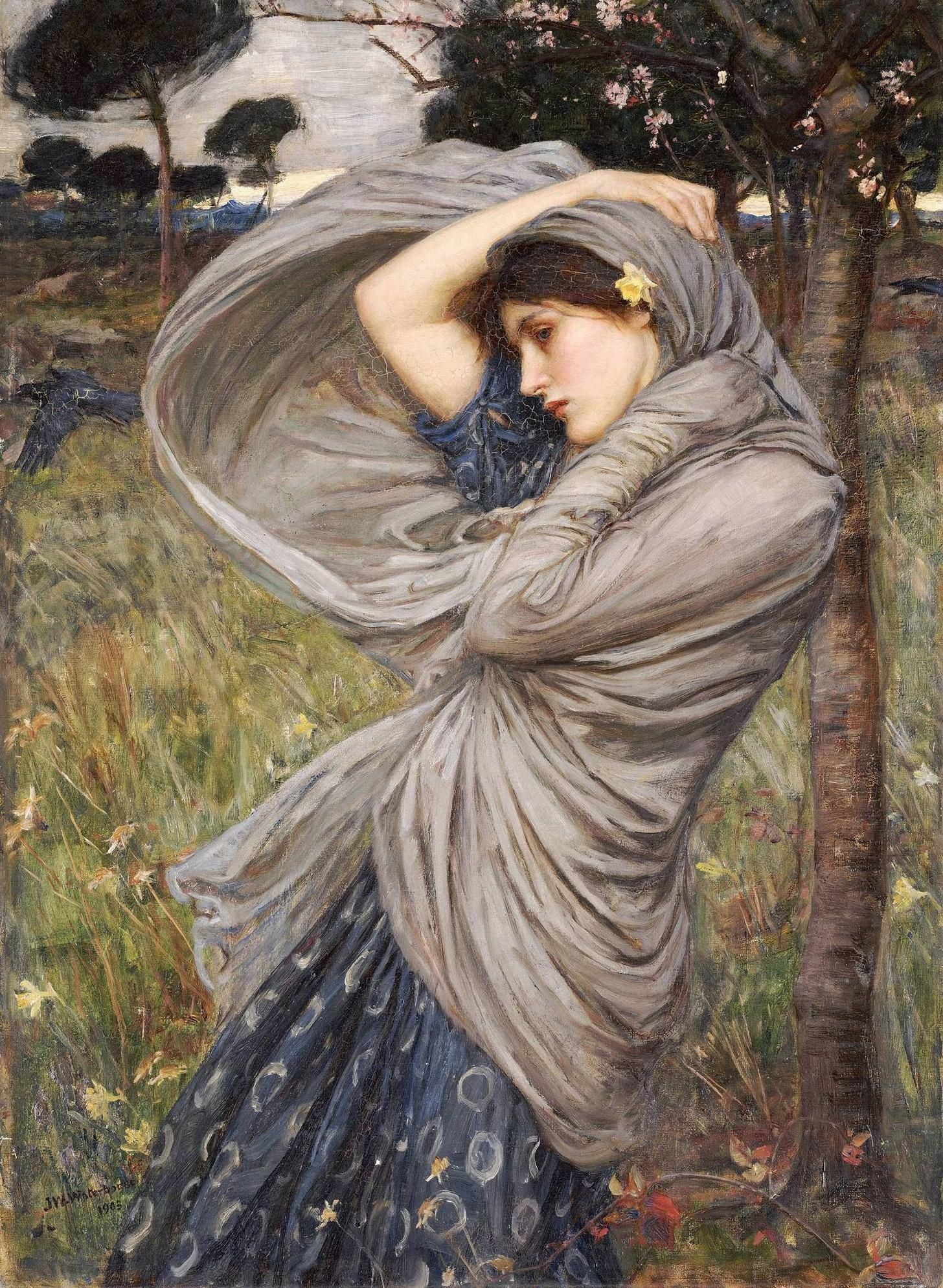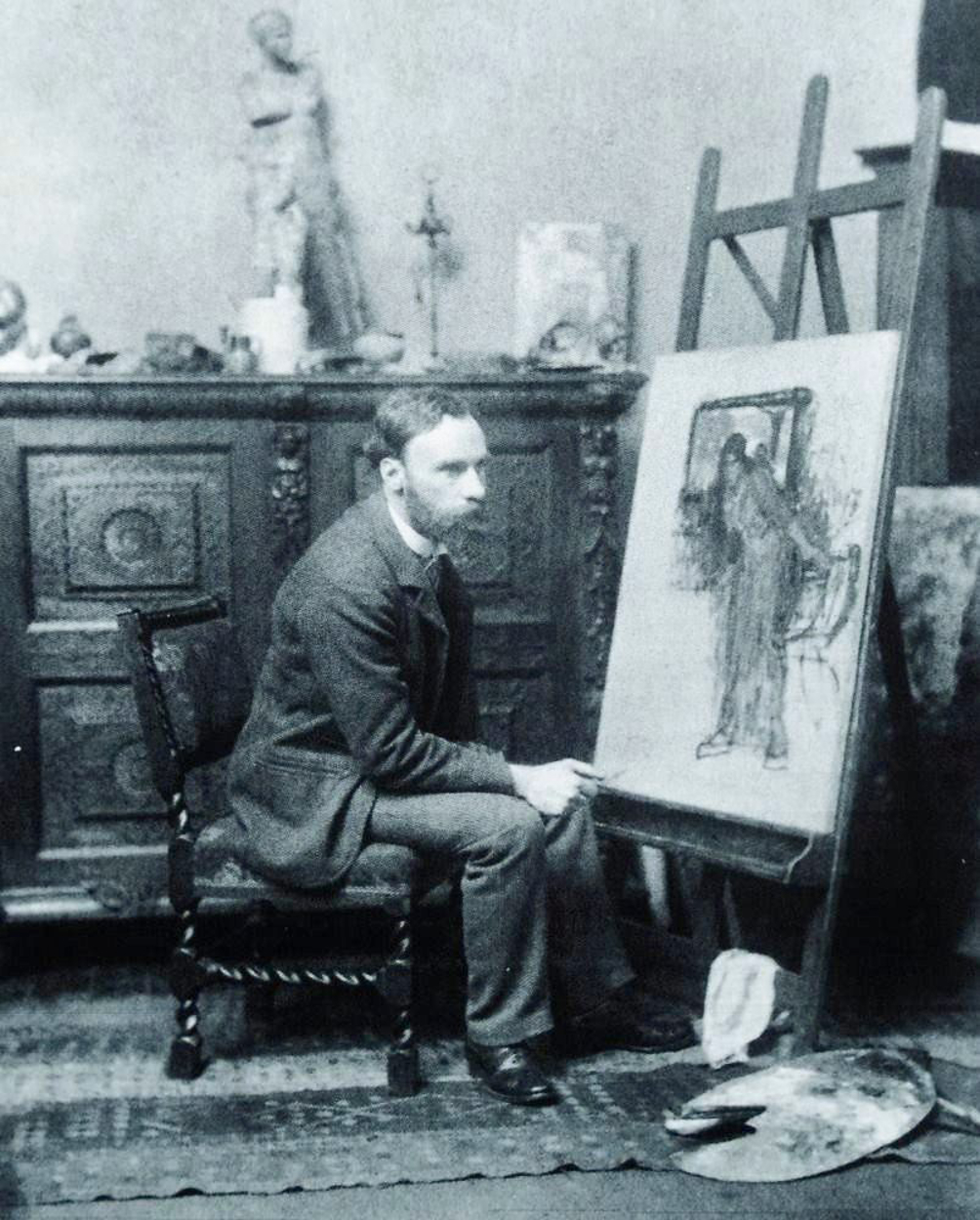Boreas is named for the Greek god of the north wind; it depicts a young girl buffeted by the wind. The 1904 Royal Academy notes describe the subject of the painting as follows: "In wind-blown draperies of slate-color and blue, a girl passes through a spring landscape accented by pink blossom and daffodils." The painting was put up for sale in the mid-1990s after having been lost for 90 years, causing quite a sensation in the art community.
The much darker and original Greek version of the story should be considered, though it is doubtful this was Waterhouse’s intent. Boreas, god of the north wind, had been refused by Orithyia, daughter of Erechtheus, an Athenian king. Deciding to take her by force as violence felt more natural to him, Boreas abducted her as she was picking flowers. Aeschylus wrote a play about the abduction called The Orithyia, but it has been lost. Obviously, such themes were common in mythology.
Plato discussed the legend in The Phaedrus, where Socrates notes that the Sophists would assert that Orithyia may have been killed on the rocks of the river when a gust of northern wind came, and so she was said to have been “taken by Boreas.” Socrates refuses to side with the Sophists, as their “naturalist” explanations of every mythological creature would be overwhelming and a waste of time. “I accept what is generally believed, and I do not look into them but into my own self.” Socrates had no time for such frivolous things as he took the Delphic Oracle’s order to know himself as his first duty.
Still, it is a striking portrait of a young woman swept up by the wind as her draperies are blown into motion, whether we see her as accepting or rejecting the wind. The Pre-Raphaelites rejected mechanistic approaches used by Mannerist artists that followed Raphael and Michelangelo. They promoted the idea of each artist's individuality and tried to make connections between poetry and art. The movement was also inspired by medieval culture and what they claimed was a bygone spiritual and creative element that was lost in art movements of the Renaissance.
Waterhouse was born in Rome to English painters in 1849. He eventually found his way to London, where the family returned in 1854. He often drew sketches of art in the British Museum and the National Gallery. Waterhouse enrolled in the Royal Academy of Art in 1871, where his works were soon displayed at the school’s summer exhibitions. His early work focused on classic themes in large canvas paintings, including scenes of daily life and ancient Greek mythology.
- Clinton Pittman
P.S. Look at these ten classic art masterpieces that welcome spring!


 John William Waterhouse
John William Waterhouse